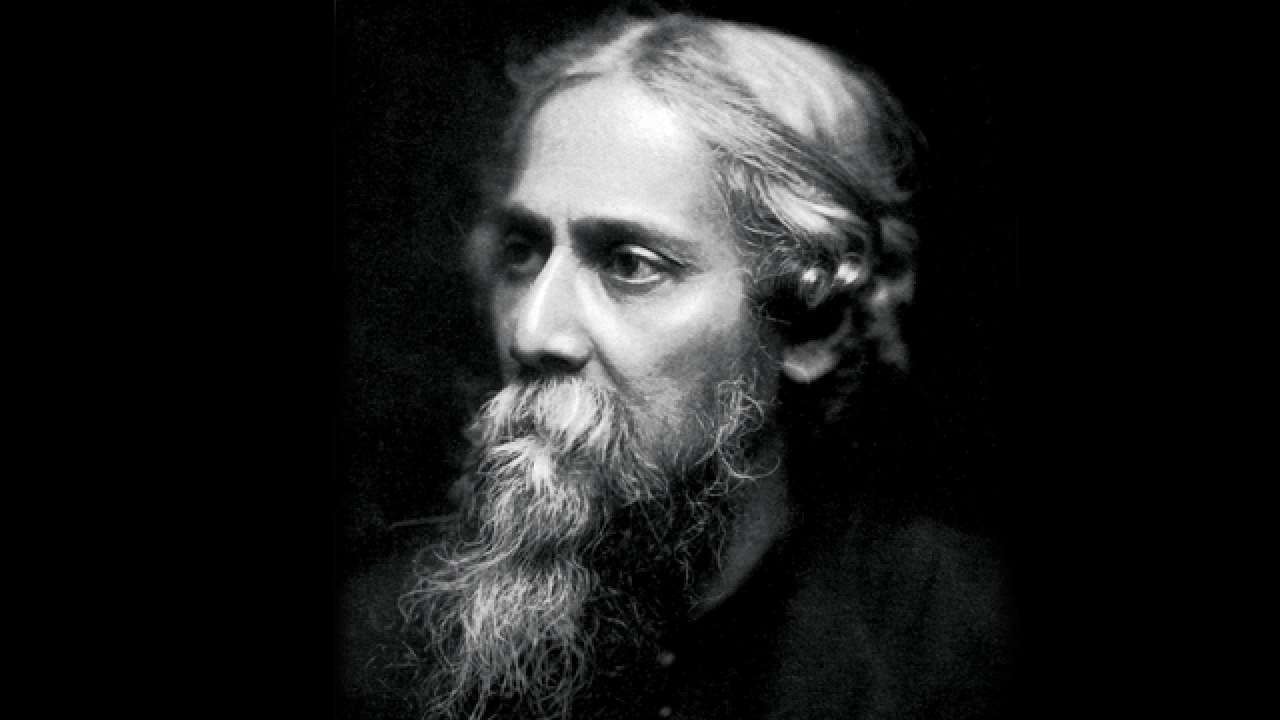The songs of Rabindranath Tagore are known as Rabindrasangeet which number approx. 2500. It is no exaggeration to say that Rabindrasangeet has explored every corner of human emotion and perception to give the best possible expression. Their philosophical depth also is unparalleled in the music world. It may be claimed, Rabindra sangeet has climaxed the wording of the ineffable in the literature of all time. Anybody not knowing Bengali miss this aesthetic treasure. A translation can at best explain the central idea of a song, but cannot surface the wonderful matching of music with the original poesy, both so intimate with its philosophical/spiritual canvas. Unfortunately, therefore, the best of Rabindra sangeet, with all its humanistic appeal of the highest order, will remain confined within the Bengali circle.
Rabindra Sangeet refers to the 2000 plus songs and poetry of love and devotion composed by Tagore. Out of these only 730 songs for which the bard had written the notations are currently sung. These songs are regarded as cultural treasures of Bengal in both West Bengal and predominantly Muslim Bangladesh The Rabindra Sangeet, which most frequently deals with transcendental love and spirituality, forms a foundation for the Bengali ethos that is comparable to, perhaps even greater than, that which Shakespeare had on the English-speaking world. The poorest boatman on the Ganges as well as the rich landlord finds expression to their emotional trials and tribulation in the songs of Tagore. Rabindra Sangeet forms an integral part of almost every Bengali cultural festival and is seen as one of the most important aspects of Bengali cultural heritage. These songs have also been used in several movies, both in Bengali and non-Bengali cinema. The national anthems of both Bangladesh and India are Rabindra Sangeets; these are “Amar Shonar Bangla" (oh my precious Bengal) and "Jana Gana Mana” (ruler of the minds of all people), written in an older form of Bangla, closer to Sanskrit, that can be readily reinterpreted in almost all Indian languages) respectively.
During the poet\'s lifetime, 104 artists (43 of whom were women) recorded Tagore songs. Since then over 5,000 recordings have taken place at HMV (Saregama\'s former avatar). Today, out of every five Bengali albums sold, one is a Rabindra Sangeet.
The influence of Rabindra Sangeet on Indian classical instrumental music is perhaps because much of what is played on Indian classical instruments today is derived from vocal music. The pioneering example in this regard was set by none other than the great Ustad Vilayat Khan Sahib.
He had adopted the famous song, Bhenge Mor Gharer Chabi, into a beautiful, lilting light classical composition. It is not so well known that many of Tagore\'s songs like Gaganer Thale in Raga Jaijaiwanti, a night melody, were musically set to tune by Swami Vivekananda, and his rendition of this composition made it sublime and ethereal.
Two famous exponents of Rabindra Sangeet have been the Calcutta New Theatre music directors Pankaj Mallick (1904-1979) and Hemant Kumar (1920-89). In Bangladesh, Rabindra Sangeet has practically been synonymous with two names: Rezwan Choudhury Bonya and Sadi Mohammad.

